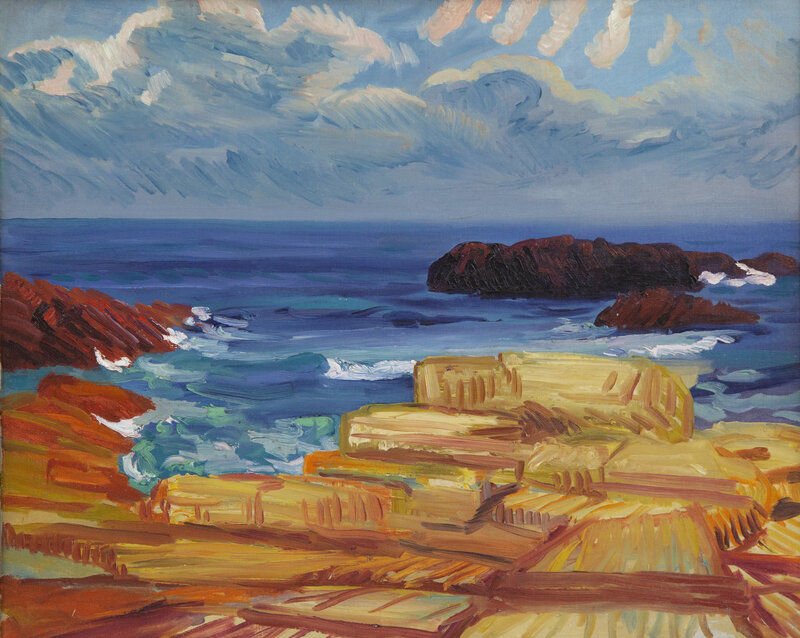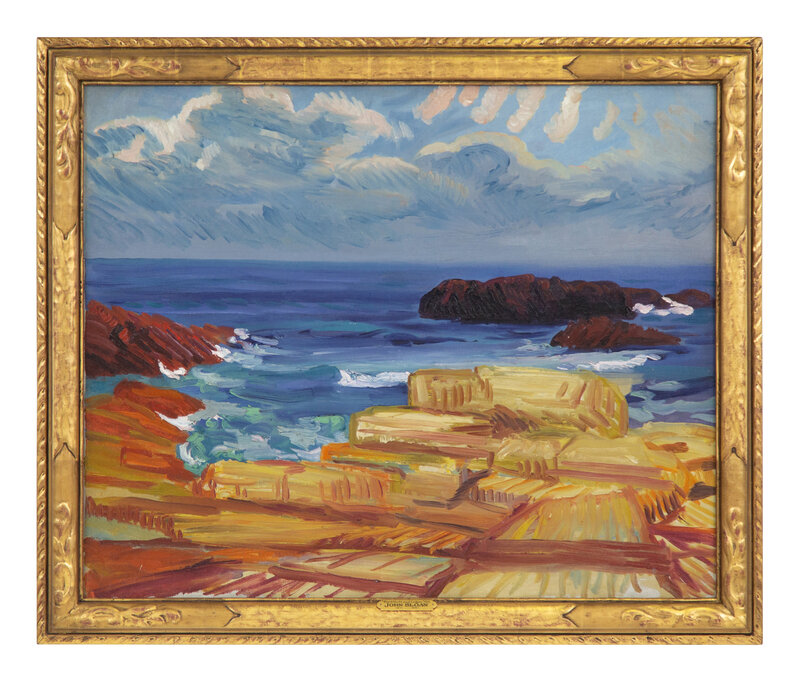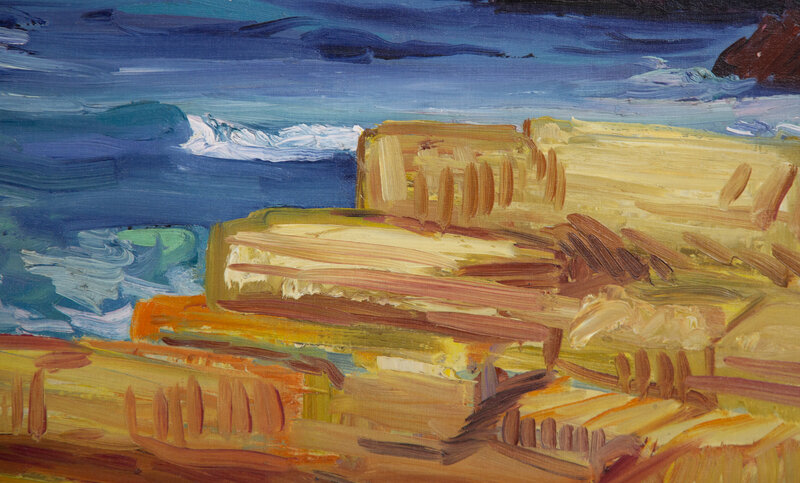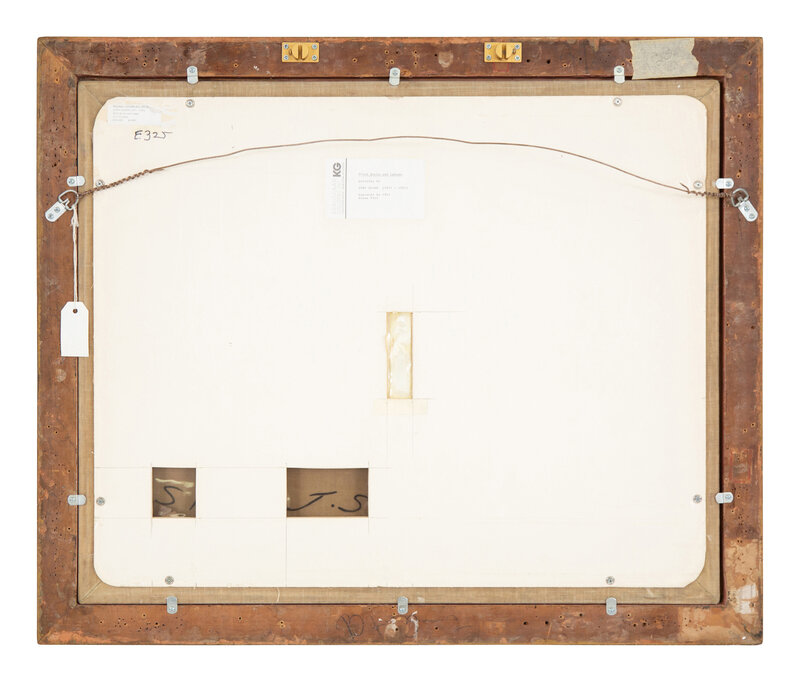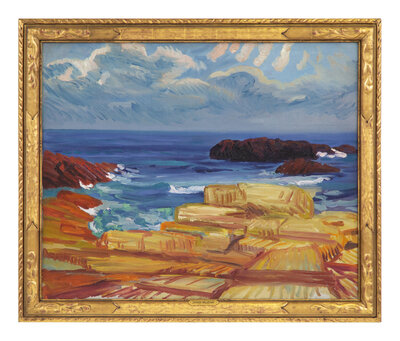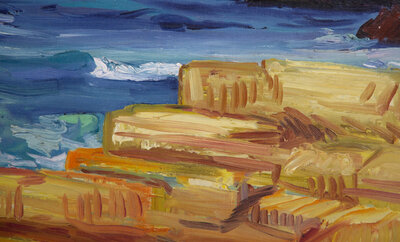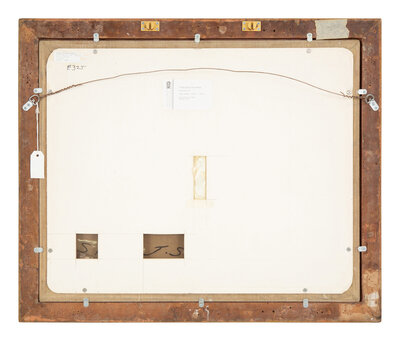John French Sloan
(American, 1871-1951)
Black Rocks and Ledges, 1915
Sale 1296 - A Lasting Legacy: The Estate of Michael Mennello
Feb 21, 2024
10:00AM ET
Live / Palm Beach
Own a similar item?
Estimate
$25,000 -
35,000
Price Realized
$20,320
Sold prices are inclusive of Buyer’s Premium
Lot Description
John French Sloan
(American, 1871-1951)
Black Rocks and Ledges, 1915
oil on canvas
inscribed G.S. (on reverse)
26 x 32 inches.
This work is recorded as #106 in the Sloan archives on deposit at the Delaware Art Museum.
Provenance:
Estate of the Artist
Kraushaar Galleries, New York
Acquired from the above by the present owner
Literature:
Rowland Elzea, John Sloan's Oil Paintings: A Catalogue Raisonné, vol. I, Cranbury, New Jersey 1991, no. 325, p. 156, illus.
In the summer of 1914, John French Sloan began to vacation in Gloucester, Massachusetts, returning there for the next four years. Gloucester, on Cape Ann, had long attracted American painters, including Fitz Hugh Lane, Winslow Homer, Childe Hassam, Maurice Prendergast, Stuart Davis, and Edward Hopper. All were lured by the scenic hills, misty moors, and rock-bound beaches. Although he was an Ashcan artist who resolutely painted almost entirely urban subjects, by 1914 Sloan began to create a series of paintings devoted to the rocky coasts and churning water of the Massachusetts coast, devoid of any human figures. Both painted in 1915, Black Rocks and Ledges and Fassett’s Cove are two prime examples of these forays into pure landscape by the artist. To compose these works, Sloan stood at the water’s edge and looked downward and outward, concentrating exclusively on form and content. The new direction from his typical subject matter excited the interest of his friends. In the late summer of 1915, Robert Henri, a fellow Aschan artist, wrote to Sloan to say that he had heard “great landscapes are being done in the Sloan shop…I sh’d like to see the pictures” (Henri to Sloan, August 3, 1915, Sloan papers, Delaware Art Museum).
The present two artworks particularly reveal the influence the 1913 Armory Show had on the artist. The New York exhibition featured nearly 1,300 works of art from both American and European artists, including the most recent works by the Parisian avant-garde. The strong brushstrokes reveal the influence of Vincent van Gogh, the color to both van Gogh and Paul Gaugin, and the weighted forms to Paul Cézanne. In his 1939 art educational publication, Gist of Art, Sloan recalled the Armory Show: “I consciously began to be aware of the technique of art: the use of graphic devices to represent plastic form. While I have made no abstract pictures, I have absorbed a great deal from the work of the ultra-moderns” (Sloan, p. 15). It is in the Gloucester landscapes that the artist began to consider formal issues, such as using color as an independent entity rather than simply using it as part of an object or person. He also contemplated how to depict mass in a two-dimensional pictorial surface, rather than seeing the canvas as a screen on which to project scenes. “He began to consider the classical concerns of balance, symmetry, dynamism, as primary elements in a picture instead of accidental benefits accruing from having seen his subject precisely” (Bruce Robertson, Reckoning with Winslow Homer: His Late Paintings and their Influence, Cleveland, 1990, p. 143).
While these landscapes are indebted to what Sloan saw at the Armory Show, they also resonate with the work of George Bellows and Winslow Homer. The color harmonies and palette of both Sloan’s and Bellow’s landscapes are often identical and their compositions from 1915 through 1917 are strikingly similar. Fassett’s Cove (Lot 67) anticipated Bellow’s The Fisherman, 1917 (Amon Carter Museum of American Art, Fort Worth, Texas) with its use of a vertical mass of rock on the left and smaller rocks to the right, to attain a sense of the land as a solid anchor against the eroding waves. In Black Rocks and Ledges (Lot 66), Sloan used Homer’s compositional device of the diagonal wedge of rock extending into the water, with the energy coming from the pure color contrasts of the ocher and black rocks against the blue of the water and sky. Together, these two landscapes reveal the artist’s newfound knowledge, “that landscape could be a magnificent source of exciting subject matter” (Grant Holcomb, John Sloan: The Gloucester Years, Springfield, Mass., 1980, pp. 10, 14).
Condition Report
Auction Specialists
